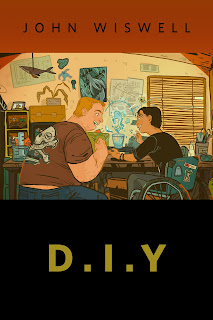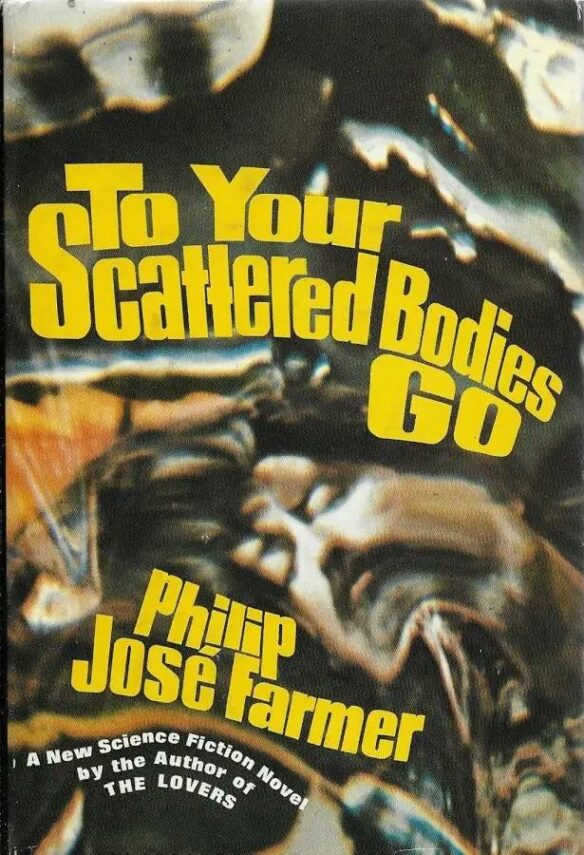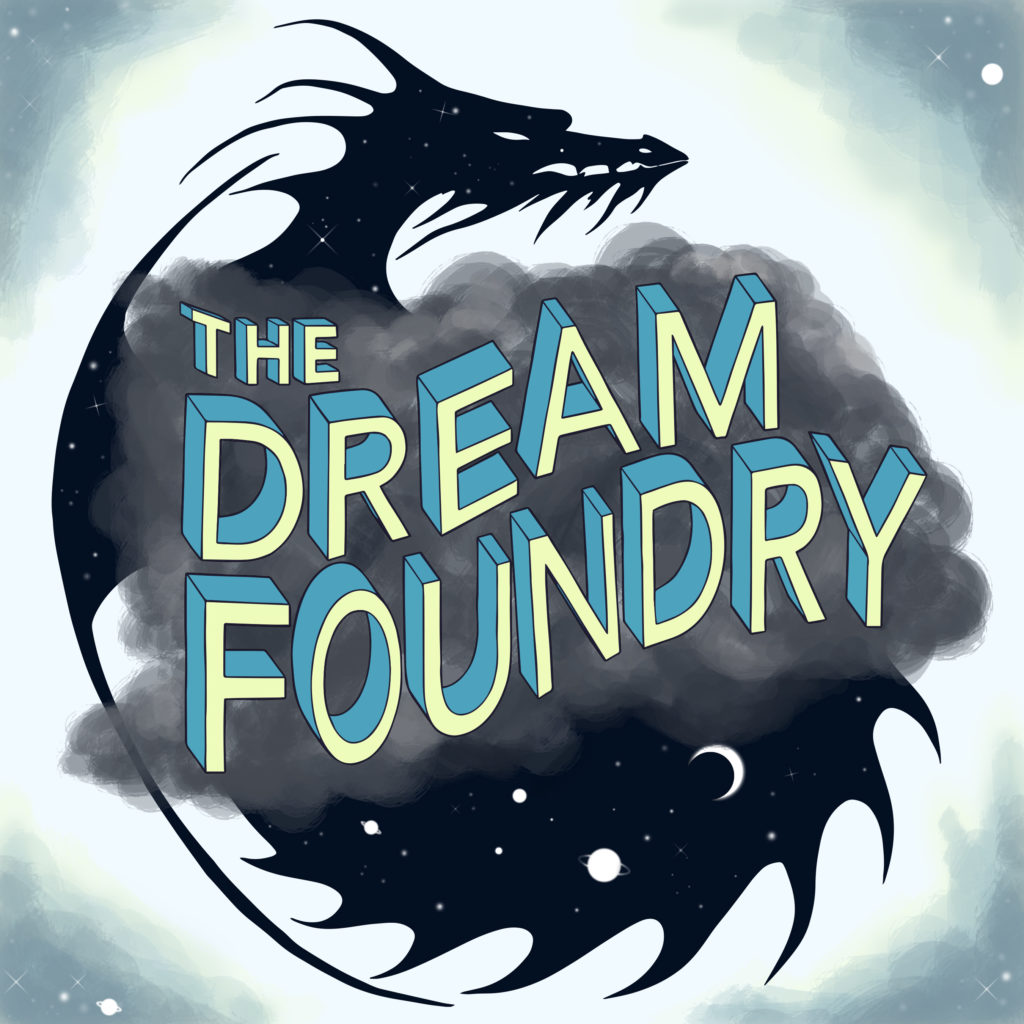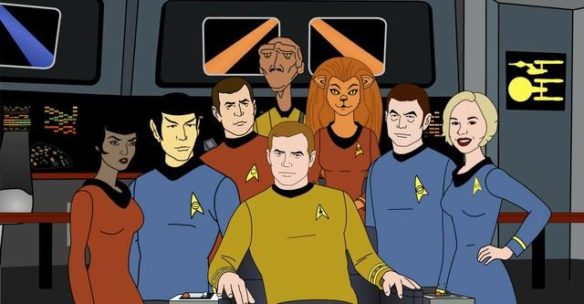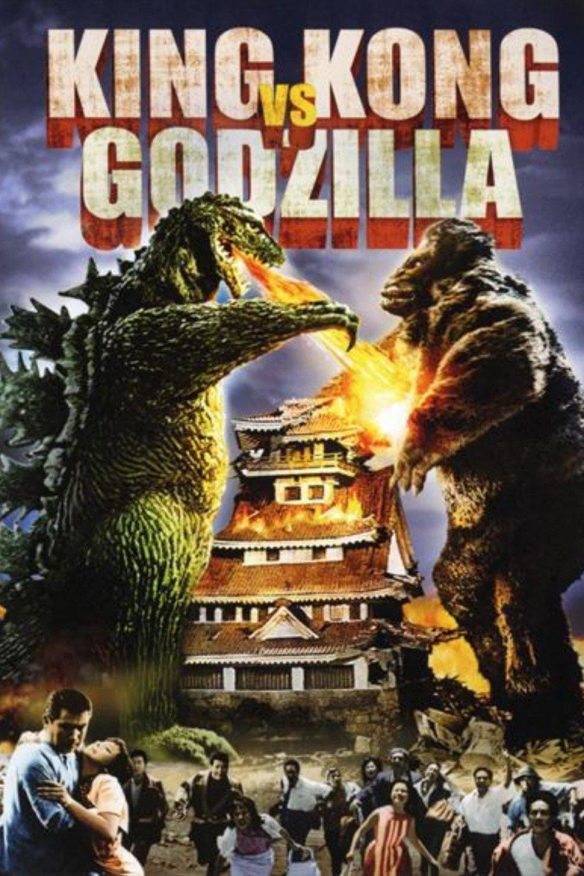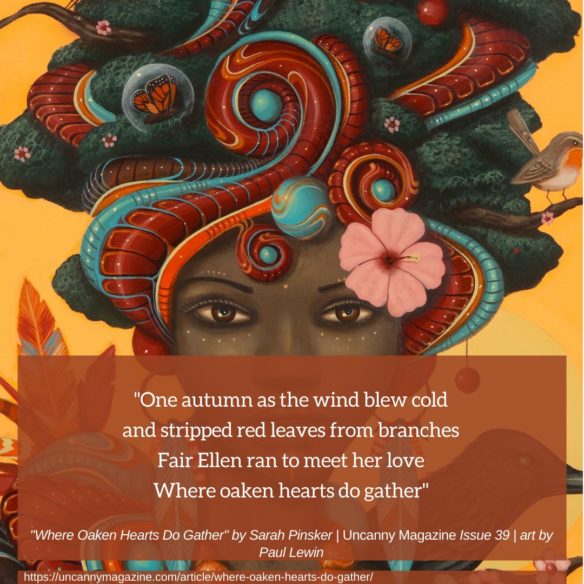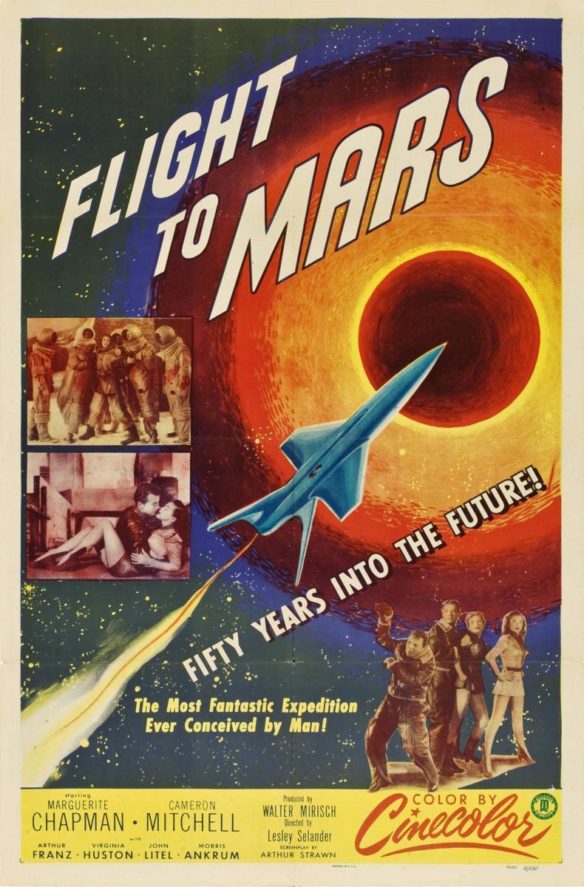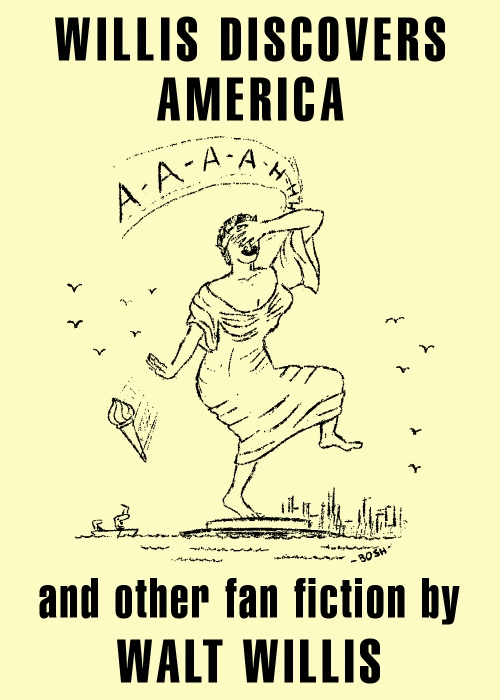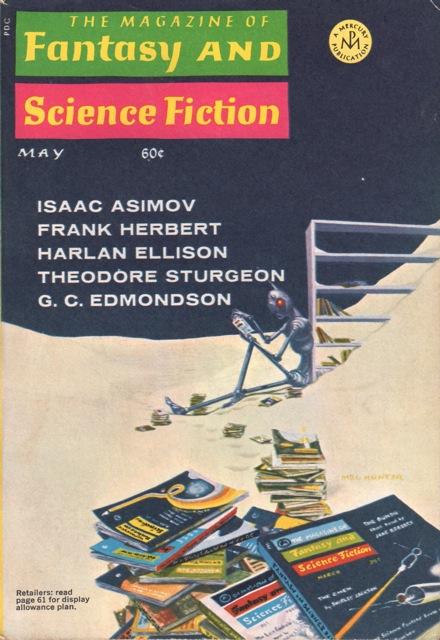(1) DEAD SCIENCE FOR YOUR ENTERTAINMENT. James Davis Nicoll brings us “Five SF Novels Inspired by Disproven Scientific Theories” at Reactor.
The history of science is filled with beautiful hypotheses slain by ugly facts. The tendency of the universe to disregard the professional needs of hard-working scientists is something about which little can be done1. In fact, disproof is a vital and necessary element for scientific progress, no matter how vexing it must have been to Thomas Gold2. However, in that interval between hypothesis and disproof, a sufficiently enticing model can inspire intriguing science fiction stories.
Here’s one of his exhibits:
Quicksand Moon Dust
Prior to space probes landing on the Moon, the precise nature of the lunar surface was unknown. Among the contending models was Thomas Gold’s4 proposal that the lunar surface could be covered in a layer of fine dust. Depending on the properties and the depth, the layer might act like quicksand5. As it happens, the lunar surface is dusty, but visitors do not have to worry about sinking into it. That is the only good news. Lunar dust is actually much nastier than Gold envisioned. Abrasive lunar dust is a hazard to machines and humans alike.
Arthur C. Clark’s A Fall of Moondust (1961) embraced the most extreme case of Gold’s model. Deep dry dust seas are traversed by lunar boats conveying tourists. A mishap strands a boat deep beneath the lunar surface. Will rescuers locate and retrieve the tourists in time, or will they smother or be boiled in their own body heat6?
(2a) KGB. Fantastic Fiction at KGB reading series hosts Ellen Datlow and Matthew Kressel present John Wiswell and Anya Johanna DeNiro on Wednesday, May 8, 2024 at 7:00 p.m. Eastern. KGB Bar (85 East 4th Street, New York, NY 10003; Just off 2nd Ave, upstairs.)
JOHN WISWELL
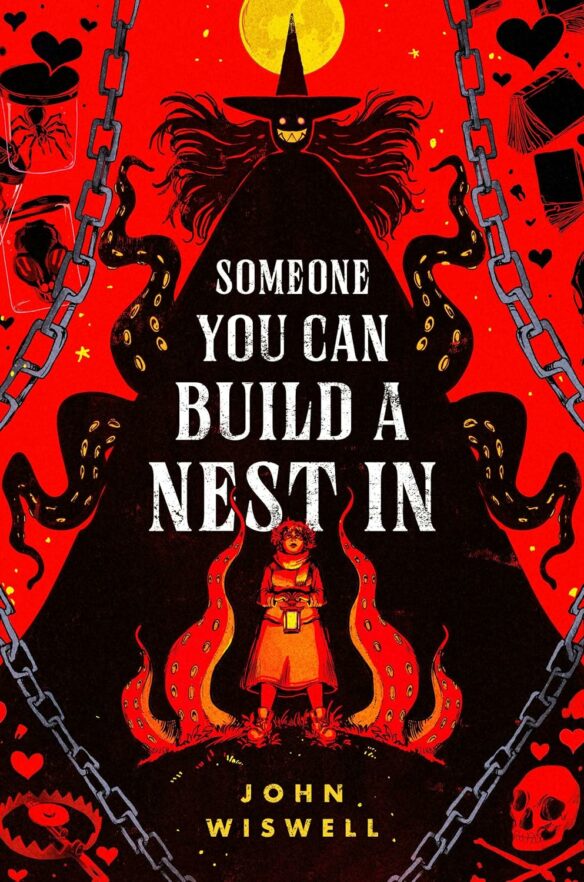
John Wiswell’s novel Someone You Can Build A Nest In was published by DAW Books in April and received starred reviews in Library Journal and BookPage, and was named one of the Best of the Best in SFF for 2024 by Ingram. His short fiction has won the Nebula Award and Locus Award, and been a finalist for the Hugo, British Fantasy, and World Fantasy Awards. His fiction has been translated into ten languages. He teaches for Clarion West and for the Rambo Academy. More about him can be found at https://linktr.ee/johnwiswell.
ANYA JOHANNA DENIRO

Anya Johanna DeNiro is the author of the short novel OKPsyche from Small Beer Press and City of a Thousand Feelings from Aqueduct Press, which was on the Honor Roll for the Otherwise Award. She has also been a finalist for the Sturgeon Award and the Crawford Award, and shortlisted for the O. Henry Award. She lives in Saint Paul, Minnesota.

(2b) IT WASN’T FOR THE TUXEDO. “But Why a Penguin?” wonders JSTOR Daily.
Historian Richard Hornsey writes that Penguin publisher Allen Lane had an avowedly “leftist vision of social-democratic progress.” Lane aimed for a democratizing public sphere with an “engaged public readership,” though one perhaps not as left-left as the contemporary Left Book Club (1936–1948). What Lane used to reach these ends was pure capitalism: “the techniques of mass production, distribution, and retail.”
And an adorable black-and-white flightless bird.
“Choosing a brand character, and specifically a penguin, allowed [Lane] to appropriate the utopian dynamic of mass consumption and mold it to fit his own progressive cultural project,” writes Hornsey….
(3) THEY SAY IT AIN’T SO. “Avengers Directors Say Marvel Flops Aren’t Superhero Fatigue” in Variety.
…“There’s a big generational divide about how you consume media,” [filmmaker Joe Russo] continued. “There’s a generation that’s used to appointment viewing and going to a theater on a certain date to see something, but it’s aging out. Meanwhile the new generation are ‘I want it now, I want to process it now’, then moving onto the next thing, which they process whilst doing two other things at the same time. You know, it’s a very different moment in time than it’s ever been. And so I think everyone, including Marvel, is experiencing the same thing, this transition. And I think that really is probably what’s at play more than anything else.”…
(4) GOT ENOUGH FINGERS? The Mary Sue is ready in case you were about to ask “Just How Many ‘Planet Of The Apes’ Films Are There, Anyway?”
…Counting Kingdom of the Planet of the Apes, which premieres next month, there are 10 total films set in the varying canons of Planet of the Apes.
Things kicked off with the original Planet of the Apes movie back in 1968; that film would go on to spawn four sequels, Beneath the Planet of the Apes (1970), Escape from the Planet of the Apes (1971), Conquest of the Planet of the Apes (1972), and Battle for the Planet of the Apes (1973)…
(5) TODAY’S BIRTHDAY.
[Written by Paul Weimer.]
Born April 29, 1908 — Jack Williamson. (Died 2006.)
By Paul Weimer: Jack Williamson. What does one say about an author who had been published continuously from the 1920’s up to the 2000s? Resilience. Staying power? An inexhaustible imagination?
All of these, and more, I say.

I first came across Williamson in the large collection of works that my elder brother, whom I think I’ve mentioned before got me into science fiction in the first place, had. That was The Humanoids, which includes his novelette “With Folded Hands”, a dystopia of unthinking robots and servitors gaining sentience, and basically (although expressed as “the Prime Directive”) following Isaac Asimov’s Law of Robotics and moving to take over the world, in an effort to protect humanity. It’s definitely a horror dystopic takeover of the world, as humans who resist the Mechanicals are taken away and lobotomized to prevent them disrupting the new society. And it’s an unhappy ending, as Underhill, our main character, and Sledge, the original creator of the Mechanicals, ultimately fail in stopping the takeover.
I’d read 1984 and Brave New World at this point, but to have a straight up science fiction story defy what was to me the cardinal trope of “the good guys must WIN” made an impression on me. Over the next decades, I encountered Williamson’s work time and again, since his prolific output meant that his works kept showing up in back corners of libraries, a story here and there in a collection, and the original book I read always simmered in my mind. This was an author with power and verve and not afraid to take chances.
Stonehenge Gate, his last novel, naturally, I had to read, and it was much of the “old time religion” of Williamson’s work that did feel something of a throwback to earlier models and eras of science fiction, but it charmed me all the same. And how could I resist a novel with a premise of a few friends basically finding a Stargate in the middle of the Sahara (the titular Stonehenge Gate) and going through to find out what was on the other side? The novel winds up pulling in elements of revolution, the origin of life on Earth and in general a cracking adventure running across multiple worlds and encountering some very strange alien species. It’s a fine capstone to an extensive and abiding body of work.
But it is The Legion of Time that really sticks out for me, even more than The Legion of Space (Space adventure), or Darker Than You Think (lycanthropes!) or his return to exploring dystopias in the Starchild books. The Legion of Time, which consists of a pair of stories, is the codifying pieces of science fiction for the idea of a Time War. Poul Anderson, the “Temporal Cold War” of Star Trek, The Big Time, Travelers, and Loki all owe a huge debt of gratitude to Williamson and coming up with the idea of multiple futures and factions in the future trying to influence the past to make their version of the timeline be the official and real one. There is also a Larry Niven Svetz story where he runs into someone trying to change the timeline from Svetz’s crapsack future (which he inadvertently created) back to the future that he is from, the nuclear war hellscape better than Svetz’s world.
The Legion of Time itself centers on a single choice, a “Jonbar Hinge”, where events are manipulated to make one young boy’s choice to either lead the world into a world of superscience and technology and freedom, or into a dread and horrible dystopia (once again, Williamson with the dystopias) where force and brutality are backed up by darker versions of the superscience of the original world. We also get a love story of sorts, as our hero Lanning feels both for Lethonee, the ruler of the utopia superscience state, and also feels attraction for the femme fatale Sorainya. And yet, even so, even as Sorianya is clearly the “Villainess”, Lethonee in her own way is as determined and forthright to make her version of the future come about as her darker duplicate. But the choice of worlds, and which of these two futures is the better for humanity, is always clear. Williamson makes no bones about being clear eyed about the dangers of dystopias and how one must risk much in order to keep them from coming about. One might not always succeed (see The Humanoids) but one must always try.
Long live his work!
(6) COMICS SECTION.
- Bizarro features a fantasy medical breakthrough, or is it breakdown?
- Eek! lets us witness an awkward dinner conversation.
- Thatababy honors Trina Robbins.
- Pardon My Planet comments on timing and the medical supply chain, after a fashion.
(7) GET OUT. “The Best Escape Rooms in the World Have a Global Competition” at Atlas Obscura.
…Escape rooms might seem like casual entertainment, but there’s actually science and a very serious global competition involved. Called Top Escape Rooms Project Enthusiasts’ Choice Awards (TERPECA), the competition gives annual awards for the best escape rooms in the world.
Nominated rooms include games like 60 Seconds to Escape in Gurnee, Illinois, involving skeletons popping out at people down hallways, or Madness Toledo in Spain, featuring biohazard spills, unleashed monsters, and a huge Alien-esque creature taking up most of a room, ready to mow participants down with its toothy jaws. Diego Esteban, the owner of Madness, describes the competition as “the Oscars of escape rooms.”…
… [There] is a surprising amount of science that goes into creating them. A methodology called Escape Room Theory dictates how escape rooms are designed and built. The theory consists of a series of “rules” designers are encouraged to follow—like ensuring each item is used only once (or there’s only one answer to a specific puzzle), making individual puzzles solvable in five minutes or less, and allowing for non-linear puzzles, meaning that one item in a room doesn’t necessarily solve the puzzle you work on in another room. The goal is ultimately to not frustrate participants or lead them down a road that’s tedious or unsolvable….
(8) SCORES 9 OUT OF 10. Nerds of a Feather’s Haley in “Review: Calypso by Oliver K. Langmead” tells why —
This awe-inspiring and utterly beautiful novel told in verse will make you think, feel, and wonder why there aren’t more contemporary authors writing sci-fi that is both full of ideas and jaw-droppingly well written….
(9) A HUGO FINALIST. In “Hugo 24 Novel: The Adventures of Amina al-Sirafi by Shannon Chakraborty”, reviewer Camestros Felapton says he can’t wait for the sequels.
Time to set sail for adventure! Yeah, people we’ve got a map in the front of the book, we’ve got a retired legendary pirate captain pulled out of retirement for just one last job, we’ve got a crew of talented misfits and we have a truly evil magician after a magical relic. Djinn, monsters, magic, all we need is some Ray Harryhausen stop-motion monsters and a great time is guaranteed….
(10) COLONIZING BINARY SYSTEMS. [Item by SF Concatenation’s Jonathan Cowie.] Life around a binary system is fairly common and SF sub-trope, the classic example being the two suns setting in Star Wars.
Indeed, in real life we have already found planets orbiting two stars.
This weekend, futurologist Isaac Arthur looked at the possibility of colonizing such worlds…
There are billions of binary star systems in our galaxy, including many of those stars closest to us. Can such systems host life, and what would it be like to live under two suns?
[Thanks to John King Tarpinian, Chris Barkley, Cat Eldridge, SF Concatenation’s Jonathan Cowie, Steven French, Teddy Harvia, Kathy Sullivan, Mike Kennedy, and Andrew Porter for some of these stories. Title credit belongs to File 770 contributing editor of the day Lis Carey.]

